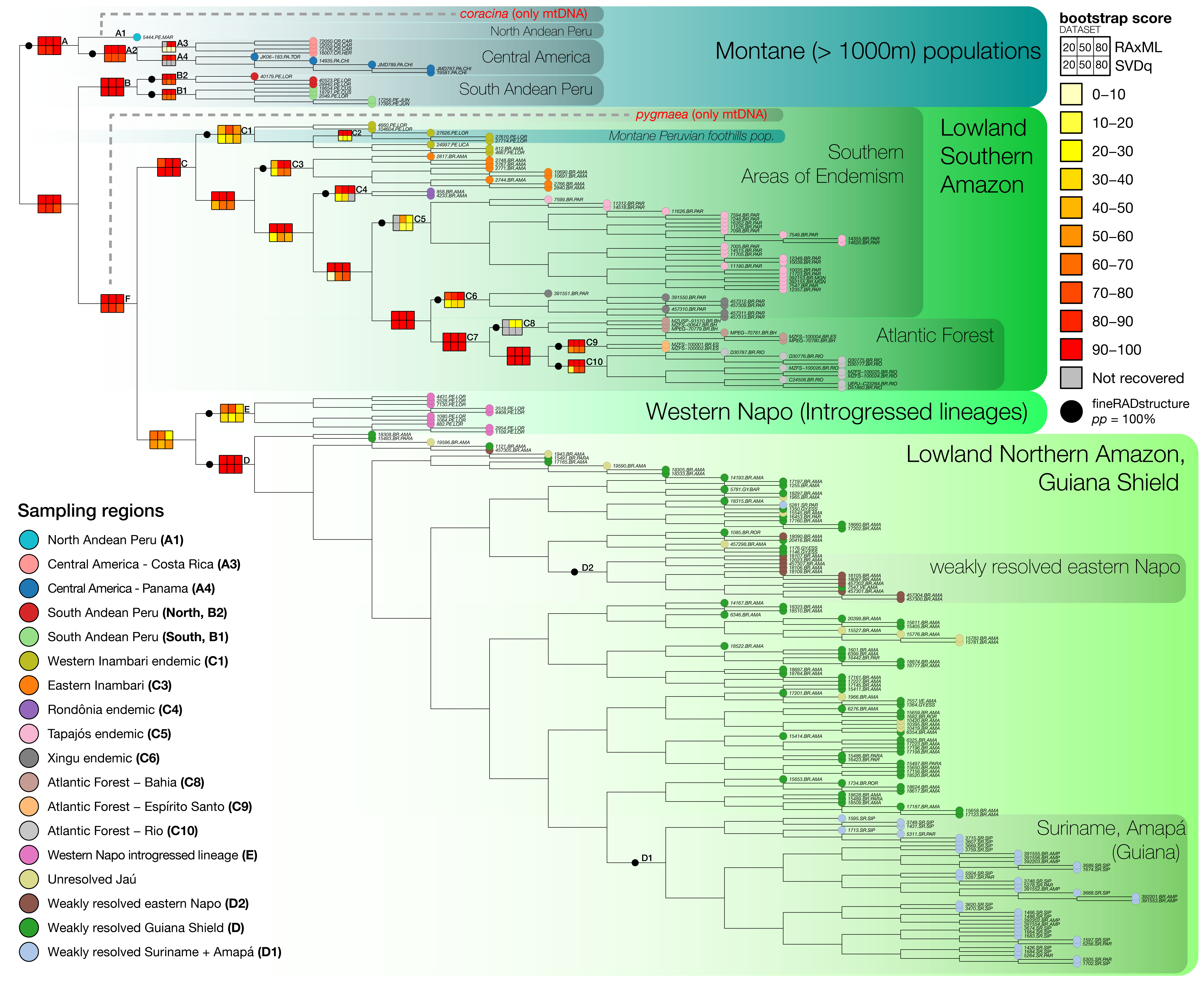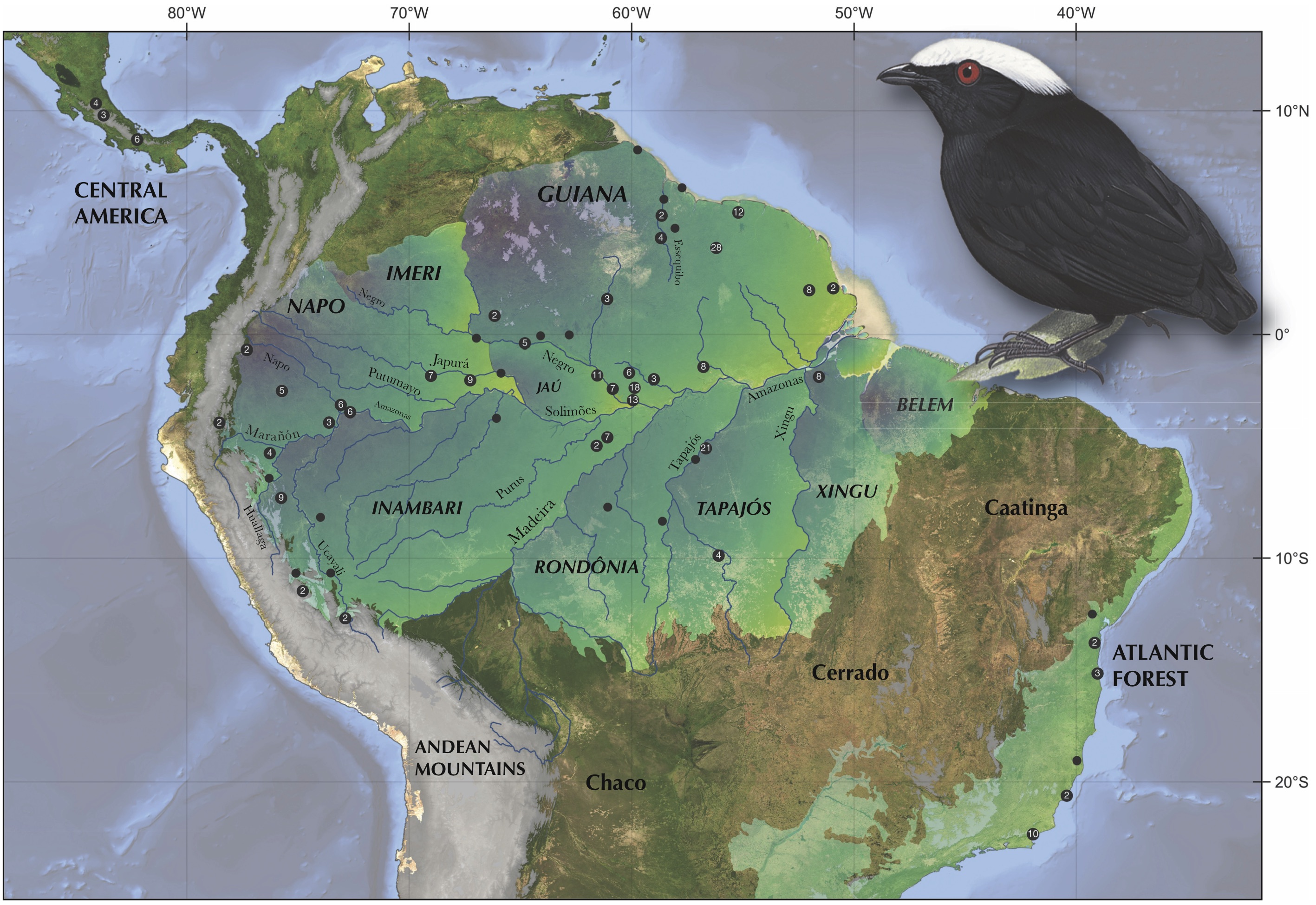
Biogeography is the study of evolution across geographic space. Although much of my recent work pertains to broad-scale evolutionary phenomena operating across geologic time, I also manage a parallel research track focused on more recent timescales. The most significant of these interests relates to the biogeography and evolution of neotropical suboscine passerines, a species-rich group of modern birds representing ~10% of living bird diversity.
Continental-scale Population Genomics
Recently, I published results from a project representing a decade-long international collaboration investigating the cryptic species complex Pseudopipra pipra (Berv et al. 2021, Molecular Phylogenetics and Evolution). Pseudopipra is a genus of small, charismatic suboscine birds that is found across various dispersal barriers, including elevational gradients of the Andes, major Amazonian rivers, the open habitat Cerrado, tepuis, and the Isthmus of Panama. As such, this group is well suited for assessing patterns of phylogenomic differentiation across a nested set of spatial scales in Neotropical forests. 
Our study applied short-read sequencing technology to generate thousands of genetic markers from a continental-scale sample of ~300 individual birds. The technique applied, combined with our phylogenetic experimental design, allowed us to interrogate several hypotheses about the origins of biodiversity in the Amazonian and Andean regions of the Neotropics. Our principal conclusion supports the hypothesis that the Andes mountains have acted as a “species pump” for some taxa – contributing to the hyper-diverse communities inhabiting these ecosystems. Currently, we are generating a chromosome assembly with PacBio HiFi, Hi-C, and optical mapping for future investigations of speciation dynamics in this system.
Download Paper2020 AOS Conference Talk
My investigations of Pseudopipra have required close collaboration with scientists at the Instituto Nacional de Pesquisas da Amazônia (INPA) in Manaus, Brazil. As we emerge from COVID-19, I hope to re-invigorate these relationships and resume field studies and specimen collection efforts with students from my home institution.
Field work photos coming soon.

